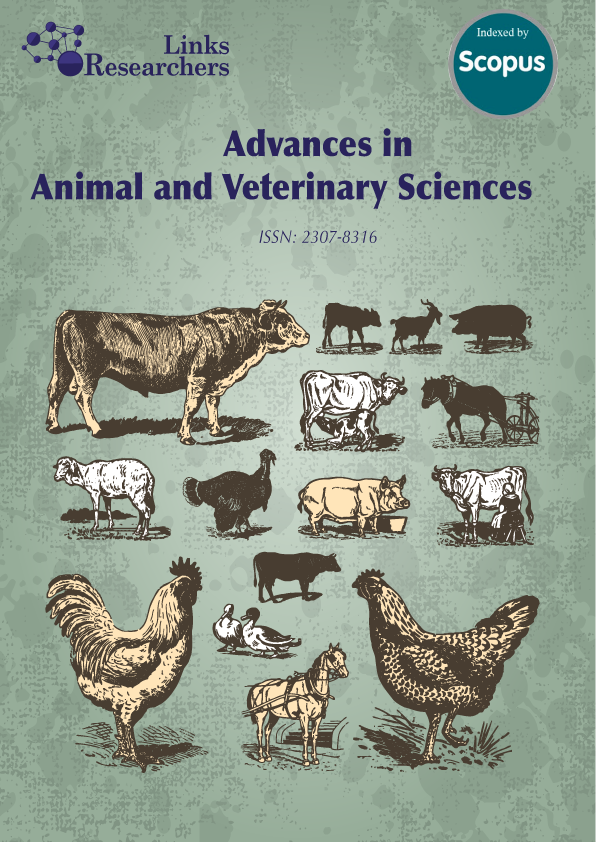Advances in Animal and Veterinary Sciences

Featuring
-
The Effectiveness of Cattle Assistance Program Policy in Bone Bolango Regency, Indonesia
Suparmin Fathan, Nibras K. Laya, Safriyanto Dako, Sayekti Handayani, Siti R. Machieu, Mohammad Z. Hippy
Adv. Anim. Vet. Sci., Vol. 12, Iss. 11, pp. 2175-2184
-
Understanding Consumers’ Repurchase Intention for Dairy Products: Customer Value Perspective
Jaisy Aghniarahim Putritamara, Tina Sri Purwanti, Budi Hartono, Awang Tri Satria, Izdihar Ratnaduhita Hidayat
Adv. Anim. Vet. Sci., Vol. 12, Iss. 11, pp. 2165-2174
-
Edible Bird’s Nest Mitigates Histological Alterations in the Cortexes of Rats’ Brains Subjected to Lead Toxicity
Abdulla A. Albishtue, Nurhusien Yimer, Md Zuki A. Zakaria, Abd Wahid Haron, Abdul Salam Babji
Adv. Anim. Vet. Sci., Vol. 12, Iss. 11, pp. 2154-2164
-
Prevalence and Risk Factors of Campylobacter Colonization in Broiler Farms at Selected Districts of Dhaka Division, Bangladesh
Muhammad Al-Maruf, Mahfuzul Islam, Md. Rashedul Islam, Syidul Islam, Md. Sirazul Islam, Md. Roknuzzaman Khan, Md. Khairul Islam, Md. Akib Zabed, K. B. M. Saiful Islam
Adv. Anim. Vet. Sci., Vol. 12, Iss. 11, pp. 2144-2153
Subscribe Today
Receive free updates on new articles, opportunities and benefits

© 2024 ResearchersLinks. All rights Reserved. ResearchersLinks is a member of CrossRef, CrossMark, iThenticate.



